Food (R)evolution photo exhibition activates partnerships and conversations along Government Avenue in the Company’s Gardens to explore complexities of a changing food system
The Food (R)evolution Exhibition is a travelling outdoor public art installation created by the Sustainability Institute’s Food System Centre in partnership with Center for Complex Systems in Transition at Stellenbosch University. It is a visual journey across a rapidly changing African food system, the exhibition is being employed as a research tool to explore how visual texts (photography and film) may prompt people to share their diverse perspectives on the complexities of the local (and global) food systems
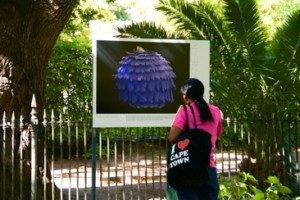
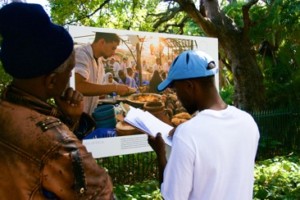
The exhibit was on display in the Company’s Garden from 15 March to 2 May. On a recent Saturday, the photo exhibition was ‘activated’ and members of the public were invited to participate by sharing their responses to the images displayed and their own anecdotes about food elicited by the exhibit.
The day was an amazing collaboration which enabled science to engage with society in one of Cape Town’s incredibly diverse and challenging public spaces As Capetonians and visitors from all walks of life meandered through the space on a beautiful sunny day, they were offered soup and bread, and invited to partake in conversations around the exhibition. Clients of the homeless initiative Khulisa facilitated their interactions with the space by serving the soup and acting as ‘hosts.’
The public space of Government Avenue is not an easy space, notes exhibit curator Gwendolyn Meyer. The gleaming walls of Parliament are contained in fences on one side of the Avenue. The public side of the Avenue is described by some Capetonians as the ‘homeless’s living room’. In this space, homeless, hungry people are the background texture, as the busy, diverse and dynamic society of Cape Town passes through. In this way, Government Avenue is at the intersection of poverty and wealth, governance and powerlessness, commerce and unemployment.
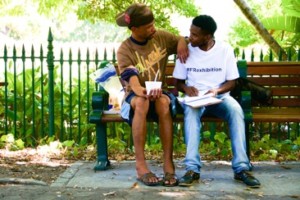
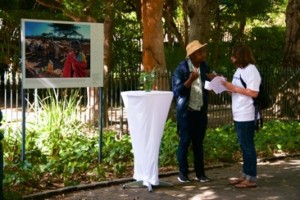
The event was shaped by the particular dynamics of the space. For example the Khulisa participants are homeless and unemployed, and are building new lives by learning how to grow and sell food to earn an income and get off the streets. Other participants such as the students from an Agroecology program at the Sustainability Institute are learning how to be farmers. Both these groups collected responses to the exhibit from a broad demographic of society, including those who survive by living on the mountain, as well as people that work in Cape Town’s high-flying trend-setting industries.
As Meyer notes: “The power of public space as a place of intersections, and conversations, is activated with art and music events, chess games, dances and in this case, a knowledge building scientific survey!”
Many partners contributed towards making the event a success: soup was donated by Ladles of Love; and bread rolls from BreadRev. The Cape Town Partnership provided the platform for the event through City Walk, a monthly walk through the city with varied activities along the way; and the Company’s Garden’s provided the stage.
Local photographer Eric Miller also took part in the conversations along the Avenue. Miller took several of the images featured in the exhibition while working on The Hungry Season, a 2011 book project with journalist Leonie Joubert that documents urban household food insecurity challenges and changes to dietary lifestyles across Southern Africa.
The exhibition includes 30 documentary photographs taken by 11 international and local photographers, including Robin Hammond, Peter Menzel and George Steinmentz. It was installed on Rooiplein on the Stellenbosch University Campus from 4 to 25th May 2016.
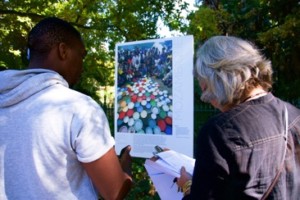
To learn more, follow the Food (R)evolution Exhibition on Facebook.
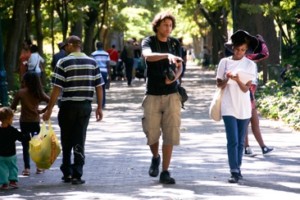
Credits:
Story: Gwendolyn Meyer and Megan Lindow
Photos: Eduardo Shimahara

